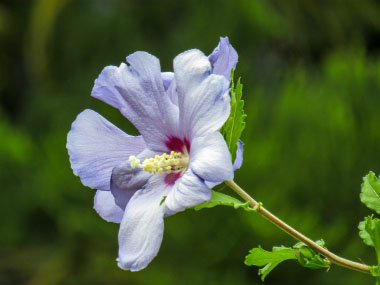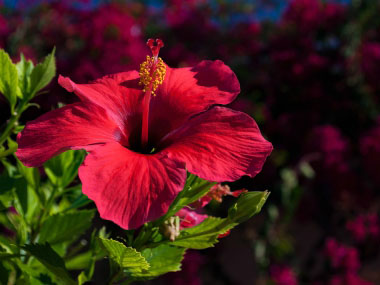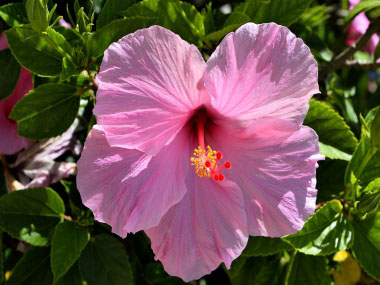





To support our efforts please browse our store (books with health benefits, etc.).
This is an impressive species of flowering plant in the mallow family (Malvaceae). It is native to south-central and southeast China, but widely introduced elsewhere. Leaves when young can be consumed raw or cooked. A very mild flavour, though slightly on the tough side, they make an acceptable addition to the salad bowl. A tea is also made from the leaves. A mild flavour is produced by the flowers and they have mucilaginous texture; great in salads. Root is edible but quite fibrous. A low quality fibre from the stems can be used for making cordage and paper. Also, hair shampoo can be made from the leaves. This flower is referred to as the Rose of Sharon.
 Fields
of Nutrition has medicinal benefits and vitamin/mineral content of Hibiscus.
Fields
of Nutrition has medicinal benefits and vitamin/mineral content of Hibiscus.
Seed Life Cycle
Perennial.
Colours
Colours vary but are often pink, red, blue, lilac and white.
Height
It can grow to 3 metres (9'), sometimes a bit taller depending on various conditions.
Health Benefits
Hibiscus leaves are diuretic, expectorant and stomachic. A decoction of the flowers is diuretic, ophthalmic and stomachic. It is also used in the treatment of several skin conditions.
Dye
Black or green dyes can be obtained from the flowers, leaves and stems combined and orange-gold to brown dye can be obtained from the flowers. However, some flowers can create a blue dye.
Winter Survival Food Handbook

PDF Plant Magazines
Types of Wild Food
Geographic Zones Seasons
Disclaimer
EdibleWildFood.com is informational in nature. While we strive to be 100% accurate, it is solely up to the reader to ensure proper plant identification. Some wild plants are poisonous or can have serious adverse health effects.
We are not health professionals, medical doctors, nor are we nutritionists. It is up to the reader to verify nutritional information and health benefits with qualified professionals for all edible plants listed in this web site. Please click here for more information.
Why Edible Wild Food?
- Food costs are rising
- Free, wild food is readily abundant
- Wild food adds nutrition to your diet
- Wild food can help treat various medical conditions





